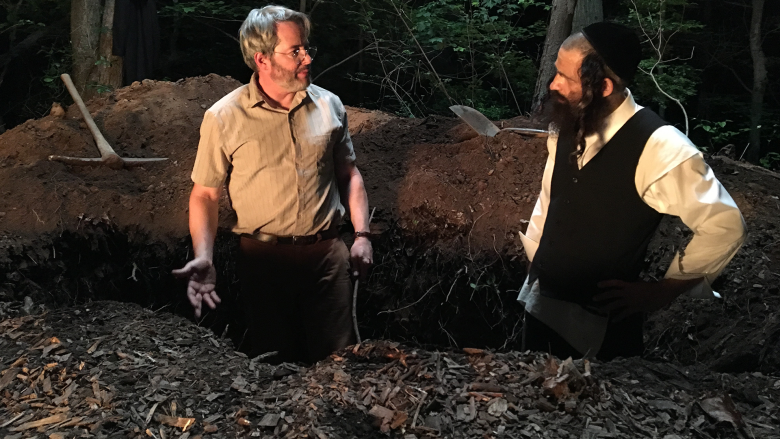Tribeca 2018: A Complex Examination of Grief in ‘To Dust’
Courtesy of Tribeca Film Festival
Matthew Broderick and Géza Röhrig in “To Dust.”
April 30, 2018
A woman off-camera flatlines in her hospital bed. Shmuel’s wife is dead. This is how Shawn Snyder’s film, “To Dust,” which had its world premiere on April 23 and won the Tribeca Film Festival’s audience award, opens.
Shmuel, in a Hasidic Jewish grieving custom, tries — and fails — to rip the lapel of his coat. This strange moment of grief and comedy mingled together is an early signal that the film isn’t going to be your typical film about death.
In the weeks after his wife’s death from cancer, Shmuel (Géza Röhrig), an Orthodox Jewish man living in upstate New York with his mother and his two preteen sons, finds he is unable to fulfill his duties as a cantor to sing in temple.
When Shmuel is haunted by disturbing dreams of his wife’s body rotting, he consults his rabbi, but he finds the rabbi’s platitudes unconvincing. Becoming obsessed with trying to understand what is happening to his wife’s body as it decays, Shmuel enlists the help of a community college science teacher, Albert (Matthew Broderick).
Albert, after much prodding, reluctantly agrees to help Shmuel, and after a trip to the library, they embark on an absurd experiment that involves a dead pig, surreptitious nighttime visits to the woods and a lot of digging.
The film’s exploration of loss and what it means to grieve a loved one is generally nuanced and heartfelt, and Shmuel’s channeling of his pain into his strange mission is genuinely compelling. But a subplot involving his two sons and their search for a whispered-about videotape is underdeveloped, and the ways Snyder tries to lighten the mood is occasionally jarring and unsubtle.
For a movie that generally treats its protagonist’s Orthodox Judaism with sensitivity and openness, much of the humor of the film is based on Shmuel’s outsider status relative to the other characters and by extension, the presumed audience.
In a joke that quickly becomes stale, Albert repeatedly refers to Shmuel as a rabbi, even after Shmuel corrects him. When a woman tries to shake Shmuel’s hand, he declines; the film’s focus in the scene is on the woman’s bemused reaction to his strange behavior.
Röhrig and Roderick avail themselves relatively well, although the script doesn’t give them much range to explore their characters. Albert, in particular, comes off as especially flat, seemingly only able to express various shades of exasperation.
The emotions and motivations “To Dust” tackles are complex, and the film’s approach to them is generally nuanced. However, the ostensibly cathartic release at the film’s close feels divorced from the preceding 80 minutes, so while the final scene packs a punch, it doesn’t feel earned.
A version of this article appeared in the Monday, April 30 print edition. Email Alex Cullina at [email protected].




























































































































































